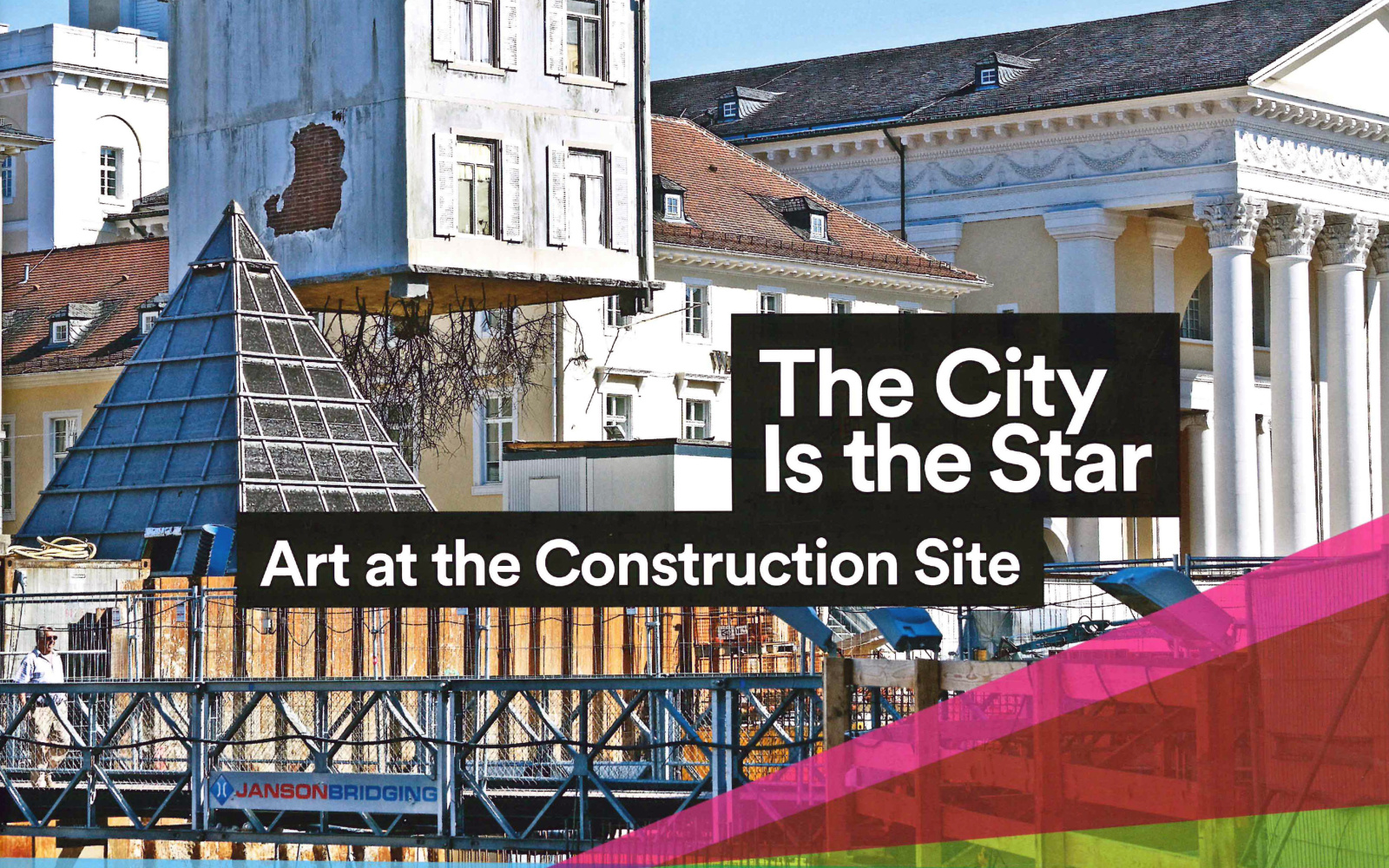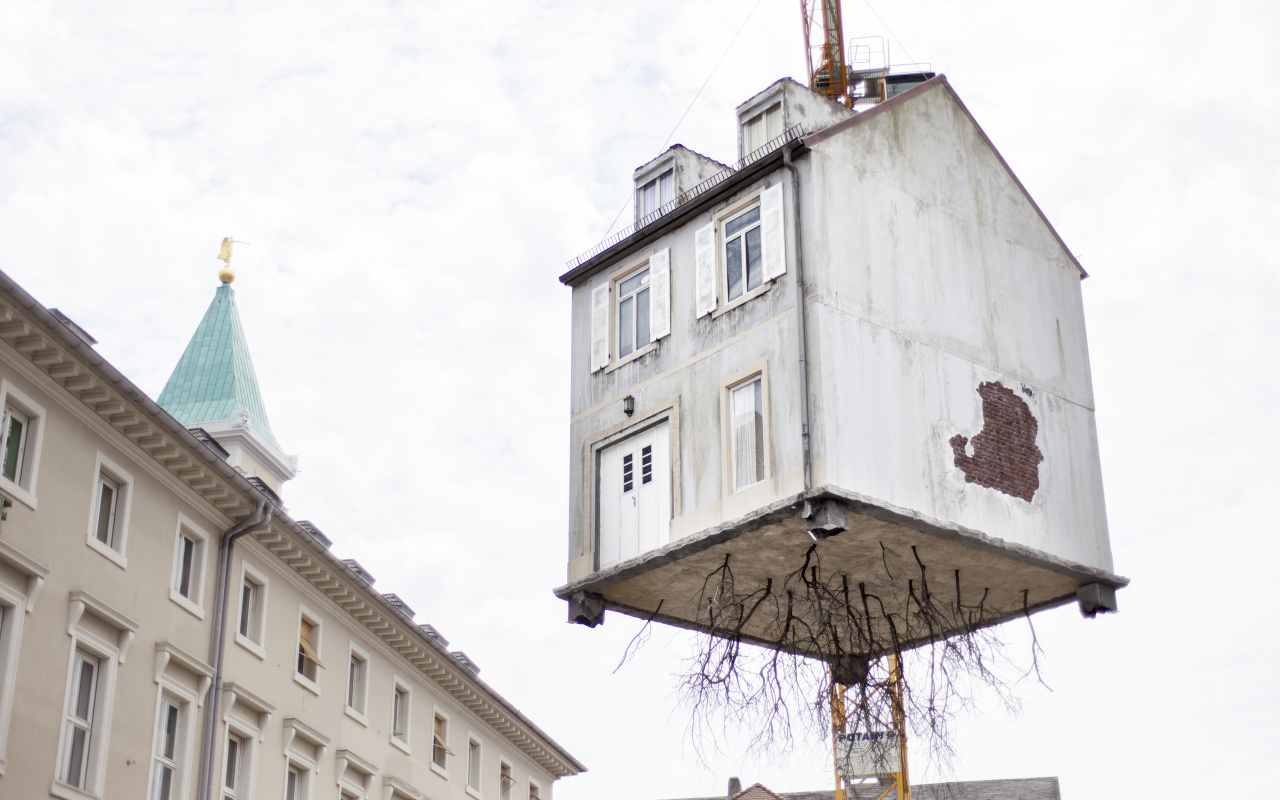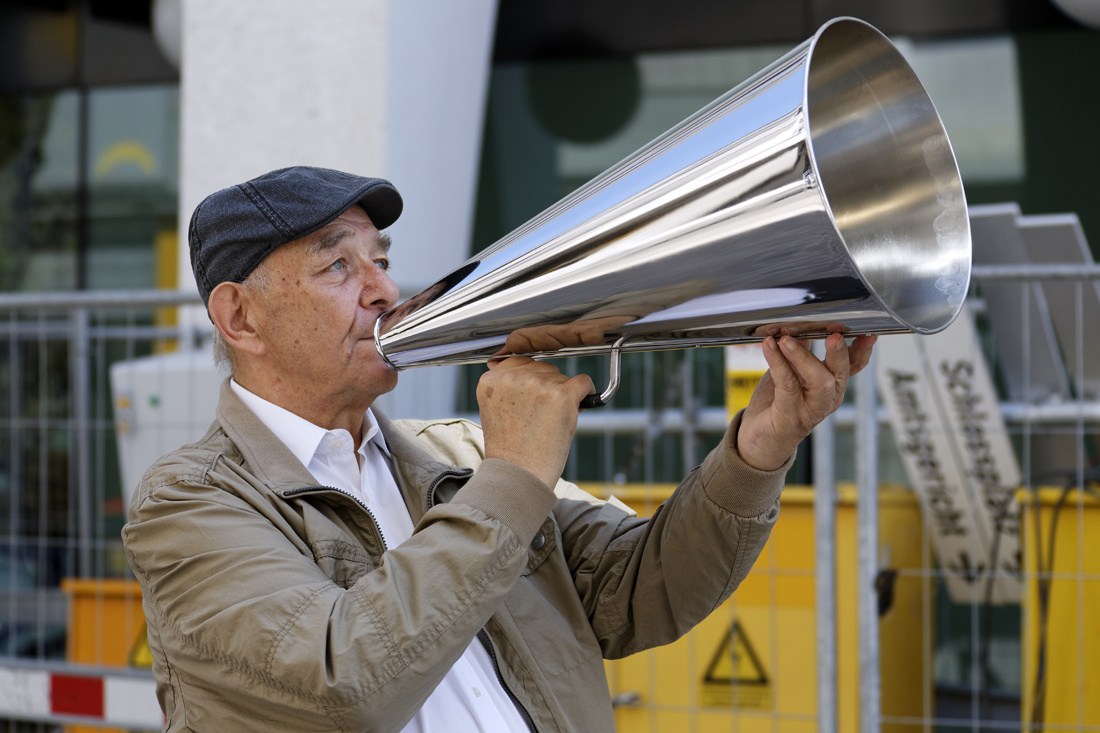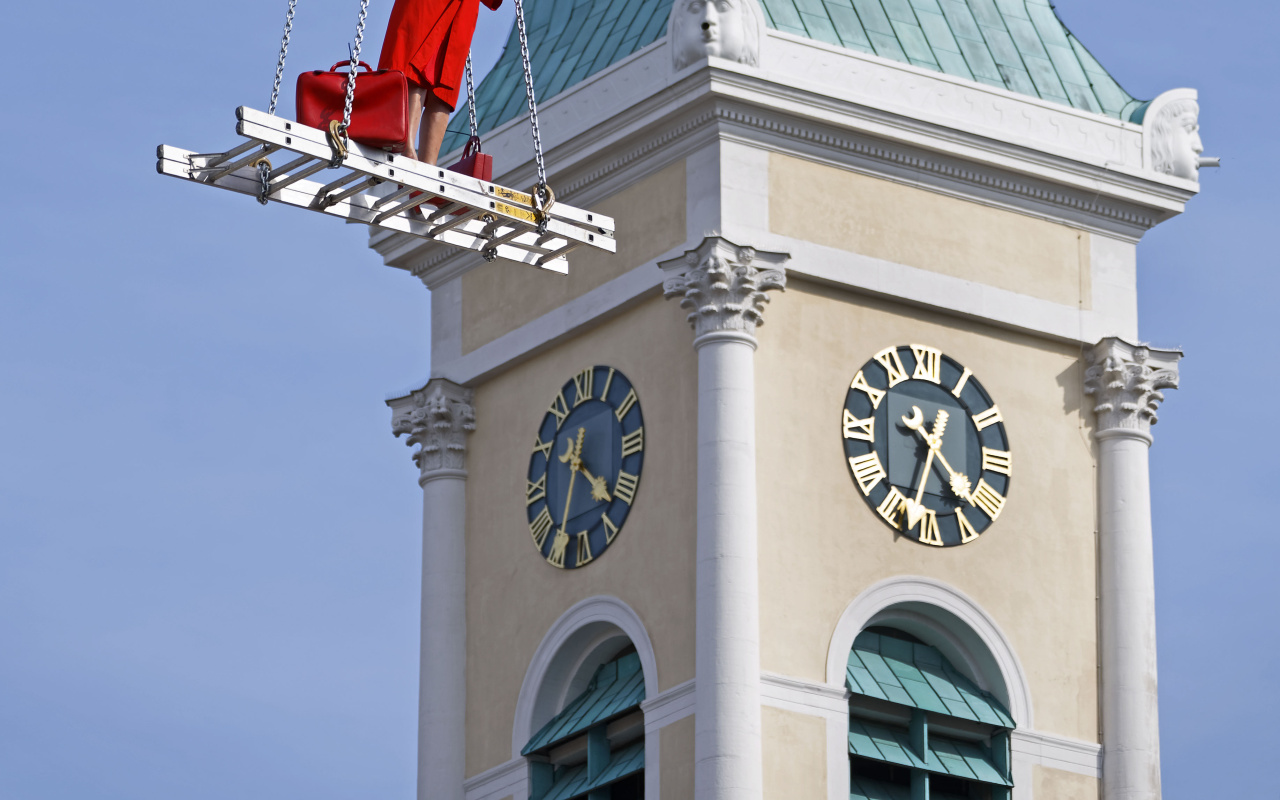Preface
Peter Weibel and Andreas Beitin
During the festival summer, Karlsruhe finds itself under siege. Construction containers dominate the cityscape, while hordes of construction workers and heavy machines dig tunnels and tear up streets and pavements. The entire Karlsruhe city center is a massive construction site resembling a battlefield.
To celebrate the city's anniversary, the ZKM has joined forces with the marketing council, Stadtmarketing Karlsruhe, and the rail association, KASIG and invited artists to get involved in the dynamic process of the city's extensive transport building projects. Rather than »Kunst am Bau« (art in architecture), this is »Baustellenkunst« (construction-site art). In construction-site art, it is not always immediately clear what are the artistic interventions and what is an element in the construction process. Here, modern art's innovation of emphasizing the aesthetic appeal of »poor« materials (Arte Povera) and everyday situations (as treated in Arthur C. Danto's »The Transfiguration of the Commonplace«, 1984) is extended to the construction site, thus altering our perception of the latter. The materials and machines of construction work, such as cranes, are repeated in the artworks, often inducing a moment of uncertainty: Is this an artistic innovation or part of the construction process? Is it art or is it a construction disaster?
This mixture of big, attention-grabbing installations and low-key performances on topics such as migration, social dislocation, surveillance, impoverishment, xenophobia, and the idea of a homeland is intended to re-contextualize public art in this era of selfies and snapshots. Unusual objects, the beauty of the damaged, and absurd performances are designed to change the urban perception of the selfie generation. Public art today is more than a sculpture or a statue; it is a collective act in a real public space, parallel in the virtual public space of social media. Public art today means performance.
To celebrate the city's anniversary, the ZKM has joined forces with the marketing council, Stadtmarketing Karlsruhe, and the rail association, KASIG and invited artists to get involved in the dynamic process of the city's extensive transport building projects. Rather than »Kunst am Bau« (art in architecture), this is »Baustellenkunst« (construction-site art). In construction-site art, it is not always immediately clear what are the artistic interventions and what is an element in the construction process. Here, modern art's innovation of emphasizing the aesthetic appeal of »poor« materials (Arte Povera) and everyday situations (as treated in Arthur C. Danto's »The Transfiguration of the Commonplace«, 1984) is extended to the construction site, thus altering our perception of the latter. The materials and machines of construction work, such as cranes, are repeated in the artworks, often inducing a moment of uncertainty: Is this an artistic innovation or part of the construction process? Is it art or is it a construction disaster?
This mixture of big, attention-grabbing installations and low-key performances on topics such as migration, social dislocation, surveillance, impoverishment, xenophobia, and the idea of a homeland is intended to re-contextualize public art in this era of selfies and snapshots. Unusual objects, the beauty of the damaged, and absurd performances are designed to change the urban perception of the selfie generation. Public art today is more than a sculpture or a statue; it is a collective act in a real public space, parallel in the virtual public space of social media. Public art today means performance.
The fascinating works of art in Karlsruhe's city center will confuse, impress, astonish, and enthrall residents and visitors. All of the artistic interventions in this exhibition are a gift to the city at the center of it all. Along with its residents and visitors, the city itself is the star!
We warmly thank all the participating artists and companies, the marketing council, Marketingrat, KASIG, and the staff of all contributing authorities and departments for their valuable support in the realization of these varied art projects.
We warmly thank all the participating artists and companies, the marketing council, Marketingrat, KASIG, and the staff of all contributing authorities and departments for their valuable support in the realization of these varied art projects.



